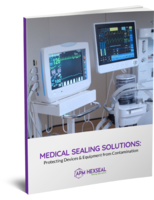Tinius Olsen Offers Automated Systems for Materials Testing
For high efficiency materials testing, Tinius Olsen offers robotic systems that can be configured precisely to customer needs. Materials as diverse as metals, plastics, and textiles can be automatically tested. Specimens are loaded in the racking system and the machine essentially runs unattended from there. Typical models consist of a horizontal tensile testing machine, a Zymark robot, specimen racks, a dimensional measuring station, an optical character recognition system for the pin stamped samples (bar code reading is also available), and the controlling Test Navigator software. One US steel company has several automated testing machines from Tinius Olsen, the oldest of which is 20 years old and has tested over one million specimens. It recently invested in another 30,000 lbf system.
Importantly, the information collected is most often directly and seamlessly entered into a customer's manufacturing system software. Tinius Olsen's scalable Test Navigator software is among the industry's easiest, friendliest, and most flexible. Data can be fed right into the user's ERP system, so that quality and other documentation can be produced in real time for all departments.
Operation of the system is simple and efficient and can also include other non-destructive tests as part of the test cycle. In this most recent instance, the robot takes a steel test specimen from the rack and places it into the dimensional measuring station where the width and thickness of the test piece are determined. At the same time the optical character recognition system reads the sample identification and records the sample details. Next the robot places the sample into a Rockwell hardness machine where hardness properties are recorded. Once this is complete, the robot places the sample into the grips, which are hydraulically operated, and the sample is secured in place for the test.
Next, Tinius Olsen's unique friction-free extensometer is lowered on the sample for a highly accurate determination of sample strain during the test. The test is initiated and a real-time stress/strain graph of the test is shown with the Test Navigator software. While the test is underway, the robot picks out the next specimen, records the specimen dimensions and hardness, and waits for the current test to complete. After the test specimen has broken, the robot removes one of the broken pieces and places it in the appropriate storage bin. The test machine returns to the original starting point and the robot removes the remaining broken piece. Once the robot has disposed of the broken sample, the robot will take the next sample and repeat the cycle.
Tinius Olsen has always been into a global provider of materials testing solutions, but with its powerful, scalable software, lifetime support, and 125 years of testing experience, it has evolved into a supplier with one-of-a-kind capabilities and services. For more information, contact: Tinius Olsen, 1065 Easton Road, Horsham, PA 19044 USA, (215) 675-7100, Fax (215) 441-0899, www.TiniusOlsen.com.




